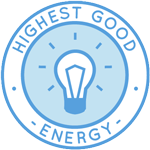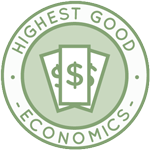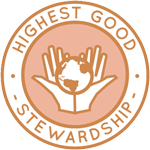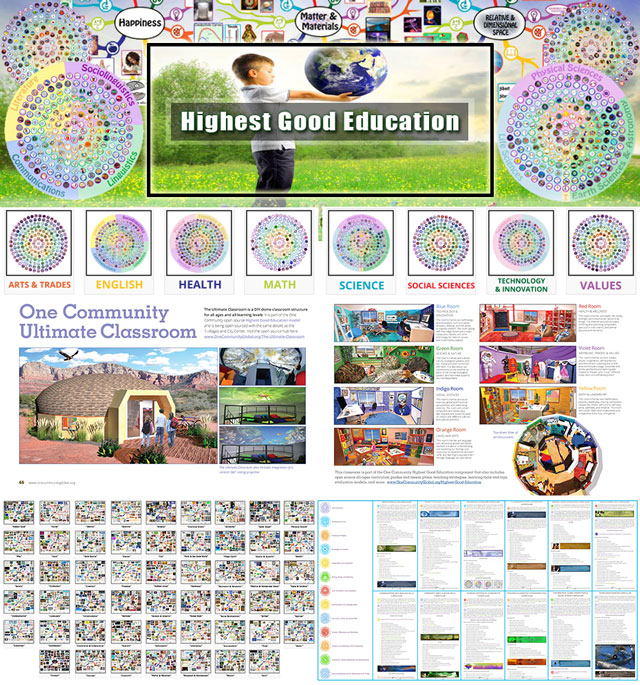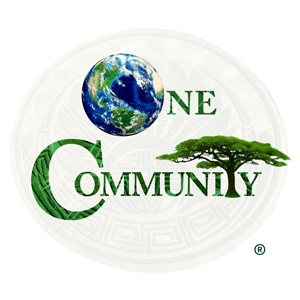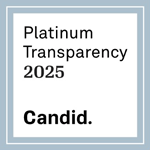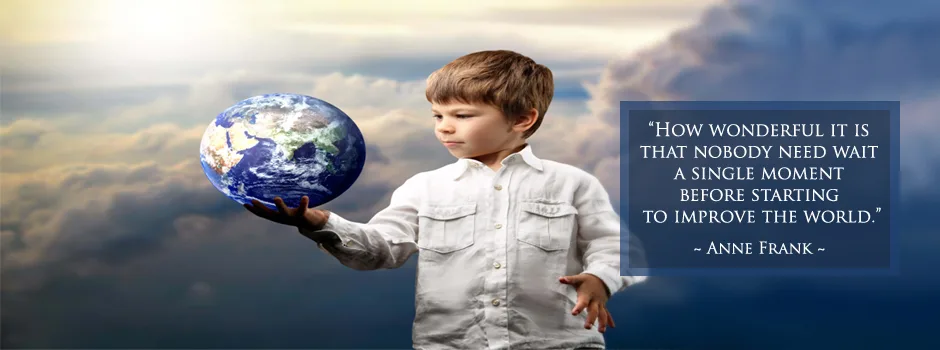
Cooperatives of People Making a Difference – One Community Weekly Progress Update #551
Posted on October 9, 2023 by One Community
One Community is working to transform the world through cooperatives of people making a difference. Our all-volunteer team is doing this through open source and sustainable approaches to food, energy, housing, education, for-profit and non-profit economic design, social architecture, fulfilled living, global stewardship practices, and more.
We believe in a model that becomes self-replicating, one that will be used to create a global collaboration of teacher/demonstration hubs. What sets us apart is our dedication to open sourcing and free sharing the complete process, ensuring that our work contributes to evolving sustainability and creating a world that works for everyone. Join us in regenerating our planet…
- Here’s our project overview
- Here’s our world-change methodology
- Here’s how this becomes self-replicating
- Here’s how we are open source and free-sharing all the do-it-yourself designs

Cooperatives of People Making a Difference
OUR MAIN OPEN SOURCE HUBS
Click on each icon to be taken to the corresponding Highest Good hub page.
One Community’s physical location will forward the movement of cooperatives of people making a difference as the first of many self-replicating teacher/demonstration communities, villages, and cities to be built around the world. This is the October 9th, 2023 edition (#551) of our weekly progress update detailing our team’s development and accomplishments:
Cooperatives of People Making a Difference
One Community Progress Update #551
DONATE | COLLABORATE | HELP WITH LARGE-SCALE FUNDING
CLICK HERE IF YOU’D LIKE TO RECEIVE AN EMAIL EACH WEEK WHEN WE RELEASE A NEW UPDATE
YOU CAN ALSO JOIN US THROUGH SOCIAL MEDIA
ONE COMMUNITY WEEKLY UPDATE DETAILS
COOPERATIVES OF PEOPLE MAKING A DIFFERENCE – HIGHEST GOOD HOUSING PROGRESS
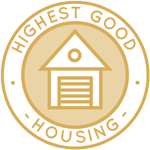 One Community is creating cooperatives of people making a difference through Highest Good housing that is artistic and beautiful, more affordable, more space efficient, lasts longer, DIY buildable, and constructed with healthy and sustainable materials:
One Community is creating cooperatives of people making a difference through Highest Good housing that is artistic and beautiful, more affordable, more space efficient, lasts longer, DIY buildable, and constructed with healthy and sustainable materials:
- Learn about: Our Upcoming Crowdfunding Campaign
- Learn about the different village models: 7 Sustainable Village Models
- Visit the open source portals for the first two: Earthbag Village OS Hub | Straw Bale Village OS Hub
This week, Anitta George Kunnappilly (Research and Management Volunteer) helped with completing the Most Sustainable Lightbulbs and Light Bulb Companies: Research, Energy Savings, and More and Open Source DIY Dam Design for Water Retention, Pond and Lake Creation, etc. tutorials.
Anitta engaged in sustainable bulbs and Earth dam projects, both of which were new to her and demanded extensive research and reading. She actively sought clarification on various aspects of these projects and provided suggestions for improved clarity. The week was characterized by ongoing dialogues and proved to be insightful and thought-provoking. See below for pictures related to this work.
Shengguang Jin (Mechanical Engineer) continued helping with the vermiculture toilet designs for the Earthbag Village. This week, Shengguang reviewed various essential features in CAD modeling, such as extruded thin cuts, hole wizard, loft, revolved thin cuts, sweeps, and more. Shengguang also created detailed models and documentation for assemblies involving batteries, plates, lenses, bulbs, and lens caps.
Furthermore, he assessed key milestones from previous designs, and the information and files were organized. See the images below for some of his work.

Cooperatives of People Making a Difference ” Shengguang – Vermiculture toilet
COOPERATIVES OF PEOPLE MAKING A DIFFERENCE – DUPLICABLE CITY CENTER PROGRESS
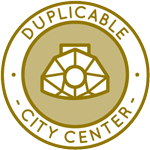 One Community is creating cooperatives of people making a difference through a Duplicable and Sustainable City Center that is LEED Platinum certified/Sustainable, can feed 200 people at a time, provide laundry for over 300 people, is beautiful, spacious, and saves resources, money, and space:
One Community is creating cooperatives of people making a difference through a Duplicable and Sustainable City Center that is LEED Platinum certified/Sustainable, can feed 200 people at a time, provide laundry for over 300 people, is beautiful, spacious, and saves resources, money, and space:
- Learn about this building and it’s function: Duplicable City Center Open Source Hub
This week, Charles Gooley (Web Designer) continued the work of assisting with web design. Charles concentrated on Water Harvesting, Catchment, and Water Conservation, with a particular focus on key sections such as Gutter Sizing, Supplying Make-Up Water, Connecting Multiple Tanks, and Material Suppliers and Products.
The latter part involved a review of various suppliers and their specifications. In addition, Charles analyzed Demand and Supply data for Rooftop Rainwater Harvesting Systems, conducting a comprehensive evaluation to determine the potential amount of rainwater that can be collected from rooftops and its potential applications. The pictures below offer a visual representation of this work.
COOPERATIVES OF PEOPLE MAKING A DIFFERENCE – ENGINEERING TEAM
This week, the engineering summary was managed by Arvindh Xavier (Civil Engineer), combining the contributions of team members Julio Marín Bustillos (Mechanical Engineer), Justin Varghese (Mechanical Engineer), and Yiwei He (Mechanical Engineer). The team made significant progress on various aspects of the project.
Arvindh conducted extensive research and successfully finalized the Work Breakdown Structure (WBS) for both the Architectural and MEP drawing sets.
Additionally, Arvindh created a tailored WBS for interior design cost analysis. Justin performed frame analysis and simulations to assess the dome’s response to seismic and snow loading, focusing on identifying maximum displacement and potential weak points using Autodesk Robot Structural Analysis software.
Julio worked on redesigning the modified dome to establish symmetry, streamlining the dome hub connector design process for future duplication.
Yiwei did research for the Lightbulbs and Light Bulb Companies page, confirming and preparing necessary information for future content research, and organized a productive Duplicable City Center group meeting, reporting substantial progress to the senior engineer, with potential updates pending their approval. See the pictures below.
COOPERATIVES OF PEOPLE MAKING A DIFFERENCE – HIGHEST GOOD FOOD PROGRESS
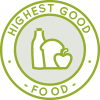 One Community is creating cooperatives of people making a difference through Highest Good food that is more diverse, more nutritious, locally grown and sustainable, and part of our open source botanical garden model to support and share bio-diversity:
One Community is creating cooperatives of people making a difference through Highest Good food that is more diverse, more nutritious, locally grown and sustainable, and part of our open source botanical garden model to support and share bio-diversity:
- Learn about the structures: Hoop House Hub | Aquapini & Walipini Open Source Hub
- See what we’ll be growing: Gardens & Hoop Houses | Large-scale Structures | Food Forest | TA
This week, the core team continued our review of the open-source Highest Good Food designs. We worked on the Food Infrastructure Rollout document, focusing on the refinement of materials and task lists for both three and twenty-person teams. We consolidated and enhanced these lists by merging information from separate sources into a single, comprehensive list.
Additionally, we proposed updates to pricing data for aquaculture species that had remained unchanged for a decade, contributed to the expansion of tools and equipment details within the food forest rollout section, and furnished essential information regarding fence post lengths. See below for the images.
COOPERATIVES OF PEOPLE MAKING A DIFFERENCE – HIGHEST GOOD EDUCATION PROGRESS
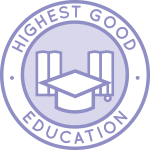 One Community is creating cooperatives of people making a difference through Highest Good education that is for all ages, applicable in any environment, adaptable to individual needs, far exceeds traditional education standards, and more fun for both the teachers and the students.
One Community is creating cooperatives of people making a difference through Highest Good education that is for all ages, applicable in any environment, adaptable to individual needs, far exceeds traditional education standards, and more fun for both the teachers and the students.
This component of One Community is about 95% complete with only the Open Source School Licensing and Ultimate Classroom construction and assembly details remaining to be finished. We’ll report on the final two elements to be finished as we develop them.
With over 8 years of work invested in the process, the sections below are all complete until we move onto the property and continue the development and open sourcing process with teachers and students – a development process that is built directly into the structure of the education program and everything else we’re creating too:
- Program Overview: Education Open Source Hub
- How the components work together: How to use the Education for Life Program
- Lesson Plans for Life – Lesson Plans How-to
- Foundations of Outstanding Leaders, Teachers, and Communicators
- Curriculum for Life
- Teaching Strategies for Life
- Learning Tools and Toys for Life
- Evaluation and Evolution
COOPERATIVES OF PEOPLE MAKING A DIFFERENCE – HIGHEST GOOD SOCIETY PROGRESS
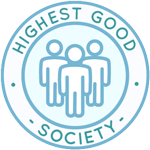 One Community is creating cooperatives of people making a difference through a Highest Good society approach to living that is founded on fulfilled living, the study of meeting human needs, Community, and making a difference in the world:
One Community is creating cooperatives of people making a difference through a Highest Good society approach to living that is founded on fulfilled living, the study of meeting human needs, Community, and making a difference in the world:
- Read the Highest Good society overview: Highest Good Society
- Learn about the model for fulfilled living and sharing: A Day in the Life
- Learn about the 4 economic models: RBE | For-profit | Non-profit | Entrepreneurship
- Learn about our open source community collaboration and management software: The Highest Good Network
This week, the core team completed 65 hours managing One Community volunteer-work review not included above, emails, social media accounts, web development, new bug identification and bug-fix integration for the Highest Good Network software, and interviewing and getting set up new volunteer team members. The pictures below show some of this work.
Another core team member helped conduct HGN PRs testing, focusing on several key areas. Firstly, we addressed the ability for Admin roles and above to submit weekly summaries for other users and resolved the comments section, noting that the admin account encountered difficulties when attempting to submit a Weekly Summary for the Owner account, resulting in a ‘The data could not be saved’ pop-up message.
Secondly, we verified that the Task Tab remains the default tab for all account roles. Thirdly, we investigated a scenario where a user does not belong to any team and discovered that users with roles of Administrator, Manager, Mentor, or Assistant Manager cannot see their own tasks in this context.
Fourthly, we tested, confirmed, and resolved a PR related to updating the text in the Dashboard Badges section to display “You have earned x badges and a personal best of x hours in a week!” when this badge is earned.
Lastly, we checked permissions for a specific Admin account, which had WBS-related permissions (“See Project Management Tab (Add team members, upload new WBSs only)” and “Add WBS”), but despite having these permissions, there was still no ability to add WBS. Additionally, we confirmed the successful resolution of the other four PRs. See the image below to view this work.
Harsha Kulkarni (Data Analyst) continued working on One Community’s Google AdWords campaigns and Analytics details. This week, Harsha concentrated on enhancing the optimization score of multiple ongoing campaigns within the Google Ads account. Her focus was on implementing target keywords, eliminating redundant keywords, and incorporating other recommended adjustments.
As a result of these optimizations, the overall optimization score saw a significant increase of 24%. Additionally, she worked on refining individual ads within each campaign, enhancing their effectiveness by strategically adding new lines, keywords, and descriptions. The image below shows some of this work.
Smit Bhoir (Data and Business Analyst) helped with administrative tasks and One Community’s Google AdWords campaigns and Analytics details. This week, Smit reviewed the Software PR team’s work, provided feedback comments to PR review team members, and finalized the weekly blog post for review.
He also attended weekly meetings with Harsha to implement AdWords recommendations on Google Ads, investigated key metrics to improve conversions, and concluded the week by planning next week’s actions, scheduling tasks for Sunday, and addressing assigned comments for a productive end to the week. You can view the collage below to see this work.
Vishvesh Sheora (Artificial Intelligence Specialist) focused on elevating the SEO performance of a multitude of blog posts featured on the One Community website. This week, Vishvesh worked on enhancing the SEO scores of the blog posts. In addition, Vishvesh created comprehensive tutorials that provided in-depth guidance on utilizing RankMath specifically for select blogs within the One Community platform.
In his tutorial he also offered step-by-step instructions on effectively utilizing RankMath for specific blog entries within the One Community platform. You can see this work in the image below. This work helps in taking steps towards transforming the world through cooperatives of people making a difference.
COOPERATIVES OF PEOPLE MAKING A DIFFERENCE – ADMINISTRATION TEAM
This week, the Administration Team’s summary, covering their work administrating and managing most of One Community, was managed by Jamie Cruz (Administrative Assistant and Team Manager) and includes Olawunmi “Ola” Ijisesan (Administrative and Management Support), and Ruiqi Liu (Administrative Assistant).
Jamie focused on refining her contributions to blog #550 and provided constructive feedback to her colleague Ruiqi. She created instructional videos to facilitate team transitions and shared insights with various teams, including funding, administration, blue steel, and expresser teams. Jamie also contributed to peer project reviews, fostering collaboration and growth.
Ola’s week involved editing summaries, creating image collages, and organizing them in the designated folder. She reminded team members to submit images and summaries for weekly progress reports. Lastly, Ola updated her work based on feedback. Ruiqi began her orientation and setup process within one community, practiced the four-step review process, and selected practice team members.
She created collage images, stored them in Dropbox, and added them to the WordPress media library. Ruiqi also incorporated SEO keywords from weekly summaries as Alt Titles on WordPress. The collage below shows some of this week’s work.
COOPERATIVES OF PEOPLE MAKING A DIFFERENCE – BLUE STEEL SOFTWARE DEVELOPMENT TEAM
This week, the Blue Steel Team’s summary, covering their work on the Highest Good Network software, was managed by Nathan Hoffman (Software Engineer) and includes Haohui Lin (Software Engineer), Kurtis Ivey (Full Stack Developer), Lucile Tronczyk (Full Stack Software Developer), Oleksandr Riazantsev (Project Management Advisor), Shree Birajdar (Software Developer), Xiao Wang (Software Engineer), Yongjian Pan (React.js/MongoDB Full Stack Software Developer), and Yubo Sun (Full Stack Software Developer and Team Manager).
The team accomplished significant milestones. Bhagyashree reviewed 10 pull requests (#1368, #1358, #1353, #1328, #1278, #1185, #552, #550, #547, and #546) and created a Blue Square reason scheduler, enhancing accessibility for all users. Haohui focused on app feature familiarization and conducted thorough reviews of pull requests, including Frontend PR#1374, 1384, 1266, and Backend PR#559, 529.
Kurtis conducted thorough reviews and implemented functional adjustments, notably integrating start date functionality into pr1369. Xiao addressed a critical issue by submitting PR #1392, a hotfix for the weekly summaries page infinite loading bug. Yongjian demonstrated commitment by addressing requested changes in the project report pull request, ensuring proper alignment and testing across screen sizes.
Oleksandr made notable contributions by rewriting the location controller, adding error boundaries, and setting up basic delete functionality. Lucile focused on improving testing capabilities through unit testing, contributing to the app’s robustness. Yubo conducted reviews, addressed issues in PR #1236, and delved into Jest mock functions for unit testing insights.
Nathan showcased proactive communication, resolving merge conflicts, fixing rendering issues, and actively engaging in discussions on permissions and ongoing challenges, emphasizing collaboration and support across the team. The collage below shows some of this work. This work helps in taking steps towards transforming the world through cooperatives of people making a difference.
COOPERATIVES OF PEOPLE MAKING A DIFFERENCE – EXPRESSERS SOFTWARE DEVELOPMENT TEAM
This week, the Expressers Team’s summary, covering their work on the Highest Good Network software, was managed by Yuri Andrade (Software Engineer and Team Manager) and includes Aishwarya Kalkundrikar (Full Stack Software Developer), Veronica Cheng (Software Engineer), Gary Balogh (Software Engineer), Harshida Dalal (Software Engineer), Tianyuan Nan (Software Engineer), and Tim Kent (Full Stack Software Engineer).
Yuri focused on transferring the logic of the new navbar to the BMHeader component, which was moved to a BMHeader folder to replace the old Header component. Yuri also established the login and logout functionality for the BMHeader. Additionally, Yuri took on the role of reviewing and reporting on activities by the Expressers Team.
Tim advanced work on the Materials List component, establishing new routes and controller functions in the Node/Express backend to retrieve and transmit materials data from the Mongo database. In the frontend React project, he reconfigured the Materials List table props, introduced modals, implemented error handling, and used CSS modules for styling.
Tim also managed a team of 10 software engineers, facilitating meetings and providing support. Olga implemented design changes on the project design page, resolved merge conflicts on PR 1330, and updated routes accordingly. She also worked on the project’s summary view, completed responsive design and functionality, and conducted a review of PR 1373.
Aaron played a crucial role in resolving technical challenges, assisting with user profile issues, verifying and approving PR1373, and providing support on coding problems and setup issues. He also implemented solutions to prevent errors and merge conflicts. Gary refined the Add Materials Form, focusing on the backend for storing inventory data and conducting reviews of PR#1277 and PR#530.
He also revisited PR#1236 to address bug-related notifications. Tianyuan completed PR reviews and focused on setting up EsLint and Prettier, addressing configuration challenges, and resolving EsLint errors. He also worked on PRs related to unit tests and project summary views.
Harshida worked on presenting new individuals at the top of the user list, addressing issues related to data storage, and participating in PR review activities, including PR#1317, PR#1369, and PR#1378. The collage below shows some of this work.
COOPERATIVES OF PEOPLE MAKING A DIFFERENCE – FUNDING TEAM
This week, the Funding Team’s summary, covering their work for One Community Funding, was managed by Ruiqi (Administrative Assistant) and includes Aaron Wang (Fundraising Assitant) and Megan Morelli (Funding Research and Acquisition).
Megan reviewed Jae’s contact list, with a specific focus on foundations, donations, and contact details, strategically reassessing the priority of individuals and organizations for outreach within these areas. She proactively initiated communication with several key contacts through initial outreach emails and followed up with those she had engaged with during the previous week.
Megan also identified additional potential foundations that provide grant opportunities by effectively utilizing the Candid database. In parallel, Aaron conducted comprehensive research on seven candidates, examining their backgrounds and roles in the field of sustainability.
He acquired their contact information and proceeded to compose and dispatch six tailored emails to these candidates, emphasizing the potential for collaboration and delving into discussions regarding prospective funding opportunities. The collage below shows some of this week’s work.
COOPERATIVES OF PEOPLE MAKING A DIFFERENCE – GRAPHIC DESIGN TEAM
Graphic Design’s summary was managed by Alyx Parr (Senior Support Specialist and Manager) and includes Ashlesha Navale (Graphic Designer), Nancy Mónchez (Graphic Designer), Shivangi Patel (Graphic Designer), and Yeasin Arafat (Civil Engineer, Graphic Designer).
This week, Ashlesha focused on creating three Volunteer Announcements, including the development of bio images and announcement images, as well as crafting web content for all three announcements. She also began researching and curating a collection of nature-based background images and theme-based images for potential use in Social Media and YouTube Preview/Intro Images in the future.
Nancy’s primary task this week involved a comprehensive re-styling process for social media post designs that were initially created during the first volunteer day.
Her work encompassed a range of Graphic Design techniques, such as innovative font usage, precise layout diagramming, careful selection of color palettes, background removal, image resolution optimization, drawing inspiration from other organizations, and the integration of brand and contact information into the final designs.
Additionally, she introduced new illustrations to enhance visual diversity, with a key focus on utilizing organizational information as “3D community images.” Shivangi’s responsibilities for the week included the creation of two volunteer announcements, involving the generation of images and web content.
She also designed multiple Facebook social media images using Photoshop. Yeasin leveraged his graphic design expertise to generate a series of original ideas for weekly blog images, covering a range of topics. He prepared these images in sets of three, including one without words and versions sized specifically for YouTube and Facebook platforms.
His work extended to future blog numbers 782, 783, 784, 785, and 786, ensuring a consistent and visually appealing representation of the content. The pictures below exemplify this work.

Cooperatives of People Making a Difference ” Graphic Design
COOPERATIVES OF PEOPLE MAKING A DIFFERENCE – MOONFALL’S SOFTWARE DEVELOPMENT TEAM
Moonfall Team’s summary, covering their work on the Highest Good Network software, was managed by Navneeth Krishna (Software Engineer) and includes Anny Wang (Software Engineer), Cheng-Yun Chuang (Software Engineer), Haoji Bian (Software Engineer), Navneeth Krishna (Software Engineer), Tzu Ning “Leo” Chueh (Software Engineer), Xiao Fei (Software Engineer), Yihan Liu (Software Engineer), Zijie “Cyril” Yu (Volunteer Software Engineer), and Zubing Guo (Software Engineer).
This week, Anny commenced her tasks on Bugs and Needed Functionalities, including fixing the reports view for team names, where she encountered codebase challenges and worked to identify and resolve the issue. Cheng-Yun demonstrated commitment by reviewing 14 pull requests across backend and frontend repositories, with a focus on frontend reviews.
Haoji initiated the implementation of a cron job for website scans, enhancing user experience. Jiadong improved the time log component’s efficiency, refactoring code and adding comments for clarity. Navneeth concentrated on “Permissions Management: View and Interact with Task ✜,” addressing missing permissions, contributing to PRs, and adapting to a Team Manager role.
Tzu Ning reviewed and approved PR #1378, ensuring password update functionality and resolving related issues. Xiao resolved issues related to badges and reviewed multiple pull requests, refining code and UI logic. Yihan enhanced the team code filter dropdown list and regex syntax while reviewing pull requests.
Zijie fixed lint issues in approximately 3,000 lines of code across various pull requests. Zubing integrated the ‘Write it for me’ button, restructured frontend code for notes data, and tackled lint fixes, demonstrating unwavering commitment to the team’s objectives. Look below for a collage of their work.
COOPERATIVES OF PEOPLE MAKING A DIFFERENCE – REACTONAUTS’ SOFTWARE DEVELOPMENT TEAM
Reactonauts’ Team’s summary, covering their work on the Highest Good Network software, was managed by Eduardo Horta (Software Engineer and Team Manager) and includes Carl Bebli (Software Developer), Eduardo Horta (Software Engineer and Team Manager), Jiyuan Xia (Software Engineer), Shihao Xiong (Software Engineer), Shiwani Rajagopalan (Software Engineer), and Shrey Jain (Software Engineer).
This week, the team members at HGN Software Development were actively engaged in various tasks and contributions. Eduardo played a central role by reviewing and approving pull requests, including those addressing issues in the TeamMembersPopup (#1373) and removing cropping from badges (#1382).
He also provided guidance to Shiwani in resolving a time log details issue, opting for a re-rendering approach for user profile updates. Eduardo actively participated in discussions, including commenting on PR #1356, and took on the responsibility of hosting the Team Weekly Meeting for Reactonauts.
He further contributed to the project by reviewing and approving lint fixes for reports components and assisting Vikram with a development task. Shiwani worked on resolving the issue of time log details appearing incorrectly on other users’ time log pages. She initially explored a new state approach but decided against it due to potential complications with the userProfile state.
Shiwani’s investigation revealed that an update issue was occurring for other users, which she resolved by updating the state in TimeEntryForm. She also addressed inaccuracies in timeEntries, specifically in week 0, ensuring that all tests passed.
Shiwani reviewed multiple pull requests, with particular attention to PRs #1378, #1374, #560, #1350 (revisited), #550 (reviewed again), #1359, #556, #1331, #1330, #1328, #1384, #1386, #1344, and #552. Despite encountering problems with missing badge icons, she communicated effectively with her team.
Jiyuan made significant progress by resolving a critical bug related to badge assignment and releasing PR #1387. During this process, he conducted a detailed codebase examination, addressing not only the immediate issue but also sharing valuable insights and suggestions with the team.
Shihao contributed by reviewing PRs #1344, #1353, and #1356, resolving conflicts and responding to comments within PRs #1203 and #1202. He also successfully resolved an issue related to the weekly summary report page’s yellow bar and optimized badge layout in PR#1346.
Shrey worked on reviewing pull requests for both the frontend and backend components, providing constructive feedback and using informative screen recordings to illustrate proposed changes.
Carl’s work primarily revolved around resolving a bug in a PR for task filtering by teams, including addressing an issue resulting in a blank screen and actively engaging in peer reviews for various pull requests, encompassing issues such as #550, #552, #1328, #1343, #1350, #1352, #1362, #1363, #1369, #1371, #1373, #1378, #1381, and #1382. Look below for pictures of this work.
COOPERATIVES OF PEOPLE MAKING A DIFFERENCE – SKYE’S SOFTWARE DEVELOPMENT TEAM
Skye’s summary, covering their work on the Highest Good Network software, was managed by Luis Arevalo (Front End Developer), and includes Bailey Mejia (Software Engineer), Hector Agudelo-Carmona (Front-End Developer), Jerry Ren (Full Stack Developer), Luis Arevalo (Front End Developer), Mounica Dingari (Software Developer), and Roberto Contreras (Software Developer).
This week, Jerry, a member of the Development Team, published BE PR #560, featuring an unauthorized route for integration into the beta HGN app and created FE PR 1375 to address the “Tangible Time Bug.” He also integrated ‘See All the Reports Tabs (Full Functionality)’ and ‘See Only Weekly Summaries Reports Tab’ permissions and discussed permission improvements with Nathan.
Hector addressed a .gitattribute issue causing uncommitted file display, began testing the application locally, and initiated work on a branch for the “location not available” modal. Roberto focused on resolving a delay issue between frontend and backend badge management, modifying component IDs and implementing cache clearing.
Bailey started tackling the New Personal Maximum Badge duplication issue and addressed badge image cropping. Mounica implemented authorization for the Weekly Summary Recipients modal, added backend functions for recipient management, and initiated the email distribution process. See the collage below for their work.
COOPERATIVES OF PEOPLE MAKING A DIFFERENCE – SOFTWARE PR REVIEW TEAM
The PR Review Team’s summary covering their work on the Highest Good Network software, was managed by Shaurya Sareen (Administrative Assistant).
This week’s active members of this team were: Anish Pandita (Software Engineer), Fan Yang (Software Engineer), Jahanzaib Malik (Software Engineer), Jeffrey Li (Full Stack Developer), Mike ” Munkh Erdene Erdenebulgan (Full Stack Developer), Olena Danykh (Software Engineer), Rhea Wu (Software Engineer), Shubhankar Mishra (Software Engineer), Tuan Dinh (Software Engineer), Vishala Ramasamy (Software Engineer), Wanting Xu (Software Engineer), Yi Lin (Software Engineer), Yixiao Jiang (Software Engineer), Ziming Song (Software Engineer).
They reviewed all the Highest Good Network PRs (Pull Requests) shared in this week’s update. The collage below shows a compilation of the work from this team.
AND WE PRODUCED THIS WEEKLY UPDATES BLOG – CLICK HERE TO SUBSCRIBE
FOLLOW ONE COMMUNITY’S PROGRESS (click icons for our pages)
INVESTOR PAGES
GET INVOLVED
One Community Welcomes Wai Lam (Veronica) Cheng to the Software Development Team!
Posted on October 7, 2023 by One Community Hs
One Community welcomes Wai Lam (Veronica) Cheng to the Software Development Team as our newest Volunteer/Consultant!
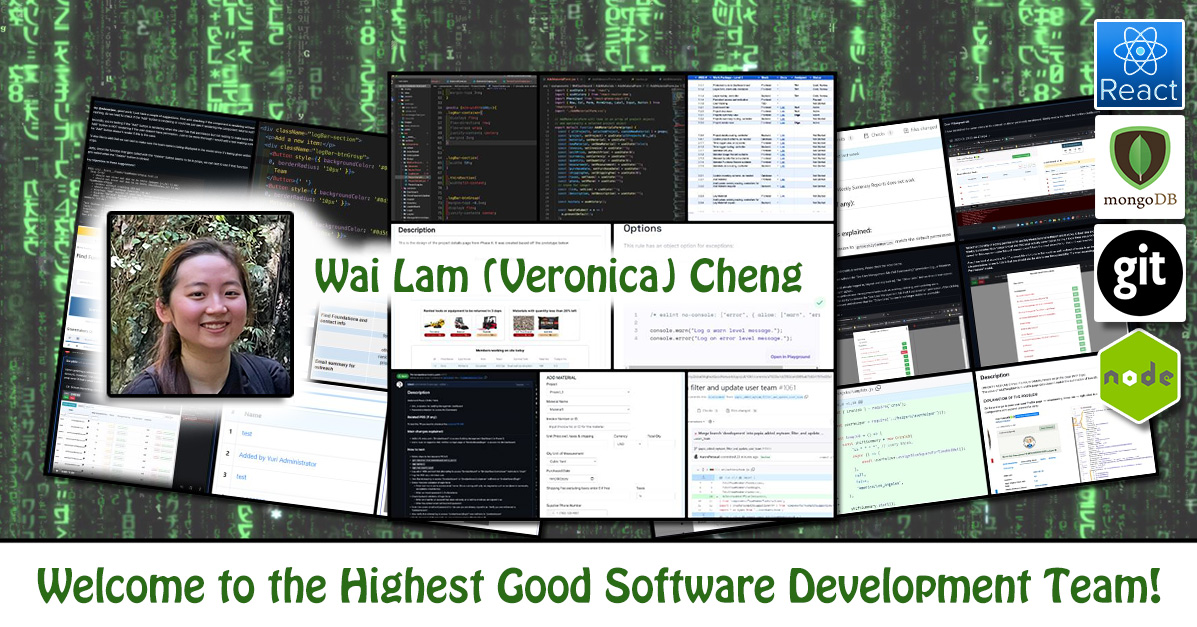
Veronica is a passionate software developer who loves crafting elegant solutions to complex problems. With a background in web development, she thrives in the dynamic world of coding, always eager to learn and adapt to new technologies. She is proficient in various programming languages and frameworks including Python, Java, PHP, React.js, Express.js, Next.js, etc. As a member of One Community team, Veronica is helping develop the open source Highest Good Network Project.
WELCOME TO THE TEAM WAI LAM (VERONICA)!
FOLLOW ONE COMMUNITY’S PROGRESS (click icons for our pages)
INVESTOR PAGES
GET INVOLVED
One Community welcomes Ashlesha Navale to the Graphic Design Team!
Posted on October 6, 2023 by One Community Hs
One Community welcomes Ashlesha Navale to the Graphic Design Team as our newest Volunteer/Consultant!
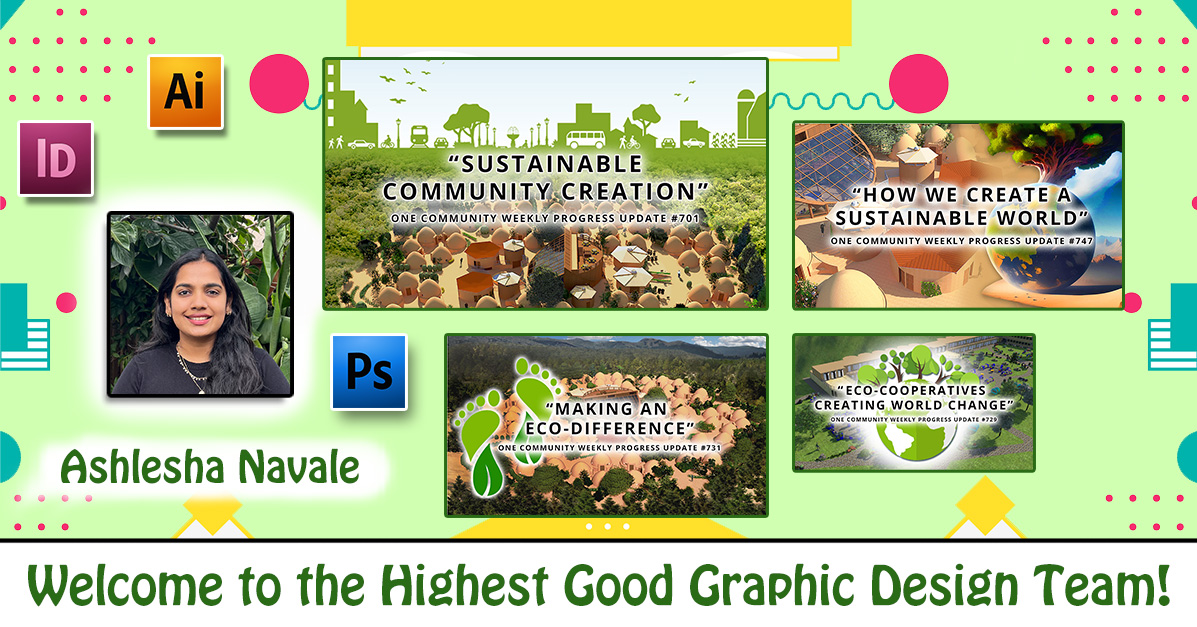
Ashlesha is a highly skilled graphic designer with a solid foundation in Graphic, Fashion, and Textile Design. She recently completed her Professional Program in Graphic Design from U.C.Berkeley Extension. Currently, she serves as a Graphic Designer at One Community Global, where her creative expertise shines. Ashlesha is responsible for crafting captivating visual content, including striking social media images, Bio Images, and informative Bio Announcements tailored to volunteers. Her work not only reflects her passion for design but also her dedication to making a positive impact through her creative contributions.
WELCOME TO THE TEAM ASHLESHA!
FOLLOW ONE COMMUNITY’S PROGRESS (click icons for our pages)
INVESTOR PAGES
GET INVOLVED
One Community Welcomes Hector Agudelo-Carmona to the Software Development Team!
Posted on October 6, 2023 by One Community Hs
One Community welcomes Hector Agudelo-Carmona to the Software Development Team as our newest Volunteer/Consultant!
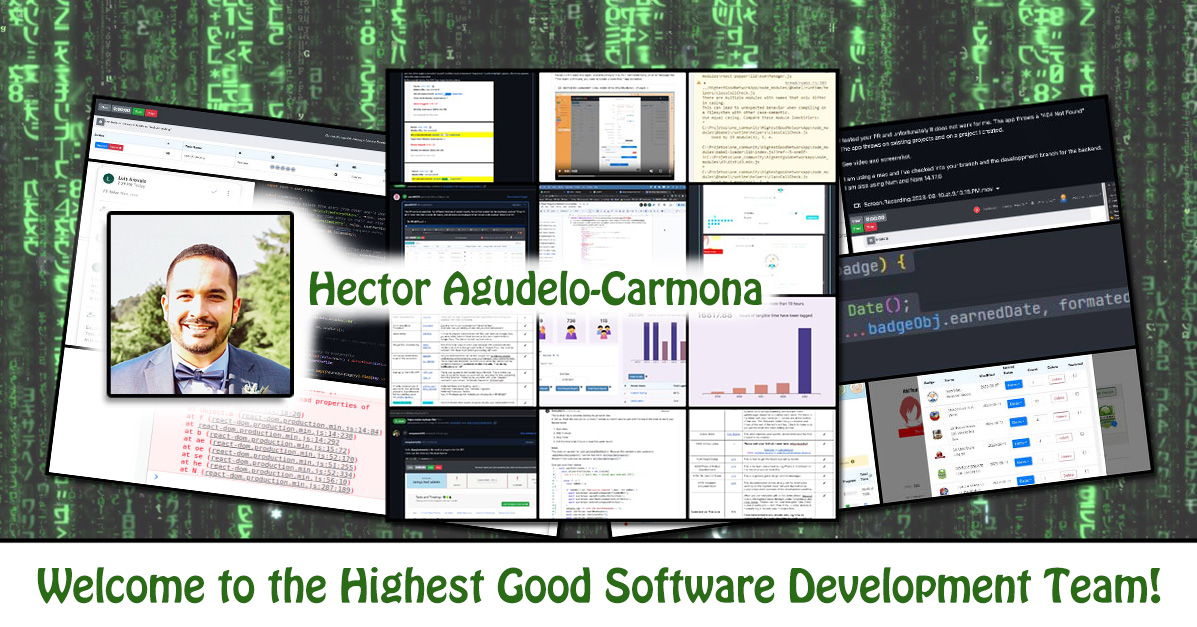
Hector is an enthusiastic front-end developer with a background in the food and hospitality industry. Joining One Community as an entry-level developer, he is contributing his expertise in software development to create exceptional web experiences. With a client-focused approach and strong collaboration skills, Hector has worked closely with the team to develop visually appealing interfaces and ensure seamless user interactions. His adaptability, resilience, and problem-solving abilities makes him a valuable addition to One Community’s software development of the open source Highest Good Network software.
WELCOME TO THE TEAM HECTOR!
FOLLOW ONE COMMUNITY’S PROGRESS (click icons for our pages)
INVESTOR PAGES
GET INVOLVED
One Community Welcomes Eduardo Varjão to the Software Development Team!
Posted on October 4, 2023 by One Community Hs
One Community welcomes Eduardo Varjão to the Software Development Team as our newest Volunteer/Consultant!
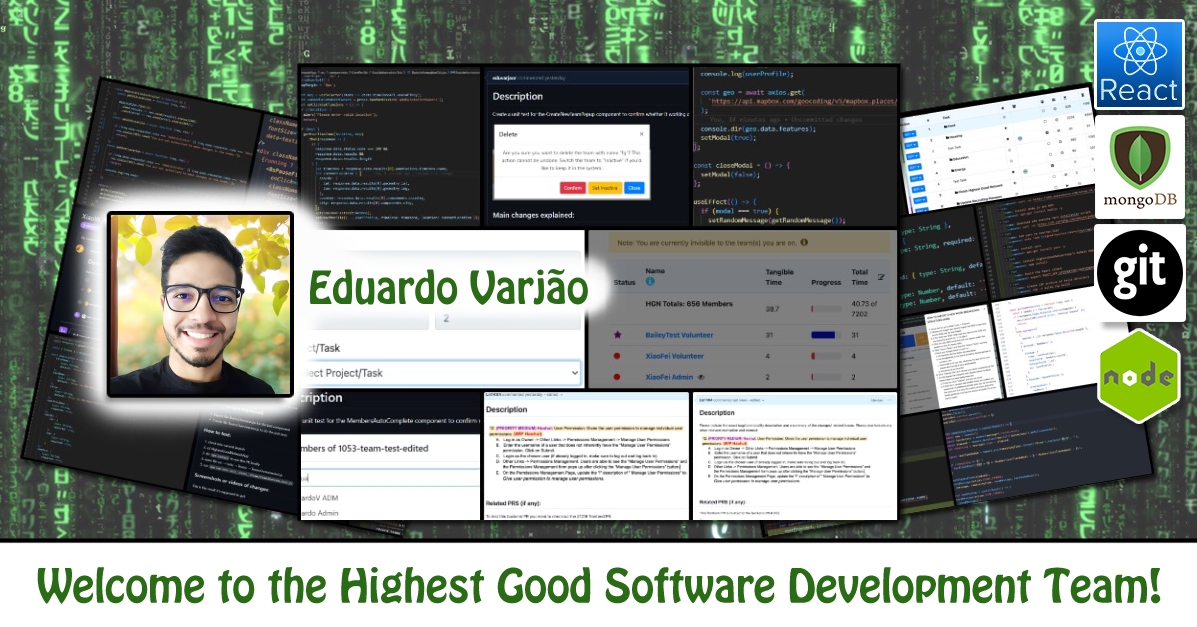
Eduardo is an experienced web developer with several projects in his career. He is an expert in HTML, CSS, TypeScript, React, Node.js, various libraries and frameworks. He taught himself to program and developed a passion for programming as it can solve complex problems and improve the quality of life and human productivity. At One Community, he played a key role in software development, dealing with Git for version control, refining React components through unit tests, and resolving software issues within the open source Highest Good Network software.
WELCOME TO THE TEAM EDUARDO!
FOLLOW ONE COMMUNITY’S PROGRESS (click icons for our pages)
INVESTOR PAGES
GET INVOLVED
One Community Welcomes Shihao Xiong to the Software Development Team!
Posted on October 4, 2023 by One Community Hs
One Community welcomes Shihao Xiong to the Software Development Team as our newest Volunteer/Consultant!

Shihao, an international student hailing from China, completed his studies at Stevens Institute of Technology in May 2023. With a six-year academic background, Shihao possesses a robust aptitude for rapid learning, adaptability, and effective collaboration within team dynamics. Furthermore, boasting one year of experience as a front-end developer and an internship as a Software Development Engineer at Amazon, he exhibits exceptional proficiency in project design, software development, and documentation construction. In his capacity as a valued member of the One Community team, Shihao is actively contributing to the enhancement and refinement of the software for the open-source Highest Good Network project.
WELCOME TO THE TEAM SHIHAO!
FOLLOW ONE COMMUNITY’S PROGRESS (click icons for our pages)
INVESTOR PAGES
GET INVOLVED
Creating a More Luxurious Life Through Sustainability – One Community Weekly Progress Update #550
Posted on October 2, 2023 by One Community
Creating a more luxurious life through sustainability is the vision that One Community passionately embodies. We build open source models that empower individuals to lead enriched lives while preserving the environment.
Across diverse realms, including food, energy, housing, education, economics, social architecture, and more, we champion open source and sustainable solutions.
Guided by the principle of enhancing lives for “The Highest Good of All,” our model is designed for self-replication, creating a global network of teacher/demonstration hubs to help others implement and further evolve this way of living.
Every creation of ours is open source and freely shared, driving sustainability forward and envisioning a world where luxury coexists harmoniously with eco-consciousness.
- Here’s our project overview
- Here’s our world-change methodology
- Here’s how this becomes self-replicating
- Here’s how we are open source and free-sharing all the do-it-yourself designs

Creating a More Luxurious Life Through Sustainability
OUR MAIN OPEN SOURCE HUBS
Click on each icon to be taken to the corresponding Highest Good hub page.
One Community’s physical location will forward the movement of creating a more luxurious life through sustainability as the first of many self-replicating teacher/demonstration communities, villages, and cities to be built around the world.
This is the October 2nd, 2023 edition (#550) of our weekly progress update detailing our team’s development and accomplishments:
Creating a More Luxurious Life Through Sustainability
One Community Progress Update #550
DONATE | COLLABORATE | HELP WITH LARGE-SCALE FUNDING
CLICK HERE IF YOU’D LIKE TO RECEIVE AN EMAIL EACH WEEK WHEN WE RELEASE A NEW UPDATE
YOU CAN ALSO JOIN US THROUGH SOCIAL MEDIA
ONE COMMUNITY WEEKLY UPDATE DETAILS
CREATING A MORE LUXURIOUS LIFE THROUGH SUSTAINABILITY – HIGHEST GOOD HOUSING PROGRESS
 One Community is creating a more luxurious life through sustainability through Highest Good housing that is artistic and beautiful, more affordable, more space efficient, lasts longer, DIY buildable, and constructed with healthy and sustainable materials:
One Community is creating a more luxurious life through sustainability through Highest Good housing that is artistic and beautiful, more affordable, more space efficient, lasts longer, DIY buildable, and constructed with healthy and sustainable materials:
- Learn about: Our Upcoming Crowdfunding Campaign
- Learn about the different village models: 7 Sustainable Village Models
- Visit the open source portals for the first two: Earthbag Village OS Hub | Straw Bale Village OS Hub
This week, Anitta George Kunnappilly (Research and Management Volunteer) helped with completing the Most Sustainable Lightbulbs and Light Bulb Companies: Research, Energy Savings, and More tutorial.
Anitta assumed responsibility for light bulb-related tasks following an introductory session to enhance her proficiency in these responsibilities. Her work involved comprehensive research on various types of bulbs, along with cross-referencing available materials.
Any uncertainties were promptly addressed and clarified. See below for pictures related to this work.
Loza Ayehutsega (Civil Engineer/Assistant Civil Engineer) completed another week of assisting with Earth Dam Design and construction for the Water Retention, Pond, and Lake Creation tutorial.
Loza completed a comprehensive review of comments on the report document, incorporating additional references related to dam safety and regulation.
There is a tentative plan to introduce supplementary topics; however, the implementation of these additions hinges on the team’s consensus and decision.
In the event of unanimous agreement, Loza will proceed with the integration of the new content; otherwise, the focus will remain on the ongoing review. Take a look at the pictures below to get a glimpse of this work.
Shengguang Jin (Mechanical Engineer) continued helping with the Earthbag Village vermiculture toilet designs for the Earthbag Village.
This week, Shengguang dedicated significant effort to reviewing and practicing various features, including coincident mating, concentric relations between parts within an assembly, tangent relations, and coincident relations.
Additionally, an assembly of a rod-bar-hooked weight was designed using computer-aided design tools and subsequently uploaded to Dropbox. Ensuring the seamless interconnection of parts remains pivotal in enhancing overall functionality and expanding application versatility. This work helps in taking steps towards creating a more luxurious life through sustainability.
Apart from honing CAD skills for top-notch work, Shengguang efficiently oversaw project management by reorganizing picture content within a Google Doc and extracting prior updates related to the Vermiculture device’s design improvements, rendering them more comprehensible.
This transformation converted a disparate collection of information into a cohesive document, setting the stage for the potential itemization of new ideas for further enhancement. See the images below for some of his work.

Creating a More Luxurious Life Through Sustainability ” Shengguang – Vermiculture toilet
CREATING A MORE LUXURIOUS LIFE THROUGH SUSTAINABILITY – DUPLICABLE CITY CENTER PROGRESS
 One Community is creating a more luxurious life through sustainability through a Duplicable and Sustainable City Center that is LEED Platinum certified/Sustainable, can feed 200 people at a time, provide laundry for over 300 people, is beautiful, spacious, and saves resources, money, and space:
One Community is creating a more luxurious life through sustainability through a Duplicable and Sustainable City Center that is LEED Platinum certified/Sustainable, can feed 200 people at a time, provide laundry for over 300 people, is beautiful, spacious, and saves resources, money, and space:
- Learn about this building and it’s function: Duplicable City Center Open Source Hub
This week, the core team helped with City Center SketchUp file updates, including the removal of one shed from the model, relocating the garden shed closer to the dome, extending the gravel surface between the garden path and the Dining dome in the garden area, and expanding the fencing on the south side of the garden to connect it with the Dining dome.
Additionally, we uploaded the compressed City Center SketchUp file for sharing with a volunteer. In parallel, we conducted HGN PRs testing, addressing various aspects such as the ability for Manager roles and above to submit weekly summaries for other users and related PR updates, as well as reporting issues concerning the Displaying Permission Management page.
Furthermore, we tested the ‘Differentiate Personal Max Badge’ feature, documenting an incorrect message after earning the badge in a video, which was then shared with a volunteer.
We also delved into testing the dev-admin account in the development environment, confirming the limited password change capability and noting the issue with blocking other accounts from editing all other details, which remains unresolved. See the image below to view this work.
Amiti Singh (Architectural Designer) continued her work by helping with the interior design details for the rental rooms within the Duplicable City Center. Amiti made substantial progress in the development of the Japanese tea room-themed visitor room in Duplicable City by finalizing the 3D visual representation of the second room option.
This work helps in taking steps towards creating a more luxurious life through sustainability. This option draws inspiration from the tranquil atmosphere of a traditional Japanese tea room, showcasing Amiti’s involvement in material selection, furniture design, color coordination, and paint palette selection. See below for the collage of images related to this.
Charles Gooley (Web Designer) completed another week of assisting with web design.
This week, Charles initiated work on the Earthbag Village Design and Setup page, focusing on sections related to Earthbag Village Septic Tank Design, Volume of Wastewater Flow, Septic Tank Minimum Effective Capacity, British Standard Calculation for Septic Tank, Septic Tank Types (including advantages and disadvantages), and Selection and Location of Septic Tank.
Furthermore, ADA requirements and relevant resources were integrated into the content. This project involved the creation of both top-level and subordinate Tables of Contents with appropriate anchor links.
Subsequently, Charles began work on Water Harvesting, Catchment, and Water Conservation, covering topics such as Rainwater Harvesting, Basic Components, Types of Storage Tanks, Rainwater for Potable Use, Handling Rainwater Contamination From Catchment To End Use, Conveyance Piping Systems, Pre-Tank Screening and Filtering, First Flush Diverters, and Cistern Inlet Strainer Baskets. The pictures below offer a visual representation of this work.

Creating a More Luxurious Life Through Sustainability ” Charles – Earthbag Village Septic Tank Design
CREATING A MORE SUSTAINABLE LIFE THROUGH SUSTAINABILITY – ENGINEERING TEAM
This week, the engineering summary was managed by Arvindh Xavier (Civil Engineer), combining the contributions of team members Julio Marín Bustillos (Mechanical Engineer), Justin Varghese (Mechanical Engineer), and Yiwei He (Mechanical Engineer).
This work helps in taking steps towards creating a more luxurious life through sustainability. The team made significant progress on various aspects of the project.
Justin focused on researching software options for frame analysis and dove into civil engineering software, particularly Autodesk Robot Structural Analysis. He successfully built a 3D dome skeleton model complete with beams and cladding, conducting simulations for Dead Load and Wind Load, specifically in the X-direction, with results visually presented.
Julio continued his work on hub connector designs, striving to complete those for the fourth row and addressing design challenges through collaboration with colleagues Yiwei and Justin, seeking solutions for intersection issues with Dipak’s guidance. Simultaneously, Julio progressed with dome hub connector designs for the fifth row.
Lastly, Yiwei led the Duplicated City Center group in a productive meeting, ensuring a follow-up plan and actively collaborating on ongoing tasks to facilitate project progress. In addition, she assisted with proofreading and reviewed various contents related to the Light Bulb page’s Updated Content while awaiting other team members’ contributions. See below for some of the images of this work.
CREATING A MORE LUXURIOUS LIFE THROUGH SUSTAINABILITY – HIGHEST GOOD FOOD PROGRESS
 One Community is creating a more luxurious life through sustainability through Highest Good food that is more diverse, more nutritious, locally grown and sustainable, and part of our open source botanical garden model to support and share bio-diversity:
One Community is creating a more luxurious life through sustainability through Highest Good food that is more diverse, more nutritious, locally grown and sustainable, and part of our open source botanical garden model to support and share bio-diversity:
- Learn about the structures: Hoop House Hub | Aquapini & Walipini Open Source Hub
- See what we’ll be growing: Gardens & Hoop Houses | Large-scale Structures | Food Forest | TA
This week, the core team continued our review of the open-source Highest Good Food designs. We continued work on the Food Rollout Infrastructure document, successfully integrating the Initial 3 Person Task and Materials Lists by consolidating items from the older list into the newer one, thereby creating a comprehensive compilation of tasks and materials within a single list.
Our efforts are now directed toward executing the same task for the 20-person list. See below for the images.
Gregory Quach (Data Enterer for Chef/Culinary) finished his work working on the Transition Kitchen menu design details. His focus centered on conducting an extensive analysis of the Transition Kitchen Recipe Build Out project, with an emphasis on refining it.
This work helps in taking steps towards creating a more luxurious life through sustainability. Gregory adeptly categorized and organized the 15-day segments, providing detailed analysis and establishing links to the Master Recipe Template Sheet to improve the scalability of these lists for future use. See the images below for some of his work.
CREATING A MORE LUXURIOUS LIFE THROUGH SUSTAINABILITY – HIGHEST GOOD EDUCATION PROGRESS
 One Community is creating a more luxurious life through sustainability through Highest Good education that is for all ages, applicable in any environment, adaptable to individual needs, far exceeds traditional education standards, and more fun for both the teachers and the students.
One Community is creating a more luxurious life through sustainability through Highest Good education that is for all ages, applicable in any environment, adaptable to individual needs, far exceeds traditional education standards, and more fun for both the teachers and the students.
This component of One Community is about 95% complete with only the Open Source School Licensing and Ultimate Classroom construction and assembly details remaining to be finished.
With over 8 years of work invested in the process, the sections below are all complete until we move onto the property and continue the development and open sourcing process with teachers and students – a development process that is built directly into the structure of the education program and everything else we’re creating too:
- Program Overview: Education Open Source Hub
- How the components work together: How to use the Education for Life Program
- Lesson Plans for Life – Lesson Plans How-to
- Foundations of Outstanding Leaders, Teachers, and Communicators
- Curriculum for Life
- Teaching Strategies for Life
- Learning Tools and Toys for Life
- Evaluation and Evolution
CREATING A MORE LUXURIOUS LIFE THROUGH SUSTAINABILITY – HIGHEST GOOD SOCIETY PROGRESS
 One Community is creating a more luxurious life through sustainability through a Highest Good society approach to living that is founded on fulfilled living, the study of meeting human needs, Community, and making a difference in the world:
One Community is creating a more luxurious life through sustainability through a Highest Good society approach to living that is founded on fulfilled living, the study of meeting human needs, Community, and making a difference in the world:
- Read the Highest Good society overview: Highest Good Society
- Learn about the model for fulfilled living and sharing: A Day in the Life
- Learn about the 4 economic models: RBE | For-profit | Non-profit | Entrepreneurship
- Learn about our open source community collaboration and management software: The Highest Good Network
This week, the core team completed 69 hours managing One Community volunteer-work review not included above, emails, social media accounts, web development, new bug identification and bug-fix integration for the Highest Good Network software, and interviewing and getting set up new volunteer team members. The pictures below show some of this work.
Harsha Kulkarni (Data Analyst) continued working on of One Community’s Google AdWords campaigns and Analytics details. This week she focused on comprehending the functionality of Google AdWords and mastering the fundamentals of campaign setup. She allocated time to grasp the configurations and acquaint herself with the pre-existing campaigns within the AdWords account.
Additionally, she compiled a list of website pages currently engaged in ad campaigns, facilitating the creation of new campaigns for other pages. Subsequently, Harsha devoted her efforts to formulating ad campaigns for two previously unaddressed pages, enhancing the overall coverage of the advertising strategy. The image below shows some of this work.
Smit Bhoir (Data and Business Analyst) helped with administrative tasks and One Community’s Google AdWords campaigns and Analytics details. This week he reviewed Shaurya’s PR Team Review, provided feedback, and discussed necessary changes.
He also worked on Google Data Analytics and Adwords setup, created requirements documentation, and began learning about Google Analytics and Adwords. Smit completed a GA4 online tutorial, attended a weekly meeting with Harsha to discuss customer engagement plans, and participated in another meeting regarding AdWords and analytics platforms.
This work helps in taking steps towards creating a more luxurious life through sustainability. Additionally, he generated new 4-digit codes for team members on the HGN app and prepared for an upcoming ad campaign. You can view the collage below to see this work.
Vishvesh Sheora (Artificial Intelligence Specialist) focused on elevating the SEO performance of a multitude of blog posts featured on the One Community website.
In addition to these efforts, Vishvesh took the initiative to create comprehensive and in-depth tutorials, specifically tailored to guide users on optimizing their content using RankMath for select blog entries within the One Community platform. This work contributes significantly to the platform’s overall digital presence and user experience. You can see this work in the image below.
CREATING A MORE LUXURIOUS LIFE THROUGH SUSTAINABILITY – ADMINISTRATION TEAM
This week, the Administration Team’s summary, covering their work administrating and managing most of One Community, was managed by Jamie Cruz (Administrative Assistant and Team Manager).
It also includes Alyx Parr (Senior Support Specialist), Anitta George Kunnappilly (Research and Management Volunteer), Olawunmi “Ola” Ijisesan (Administrative and Management Support) and Shaurya Sareen (Administrative Assistant).
Alyx successfully reviewed and organized the initial set of summaries, transferred summaries, and retrieved images for the blog. She configured her online workspace to facilitate efficient work processes. Significant effort was devoted to resolving login issues, and Alyx completed their webpage, addressing complications experienced due to website problems.
Additionally, she duplicated summaries and obtained compressed image files for future use. Anitta was entrusted with work on light bulbs and underwent an introductory session to improve her understanding of the responsibilities. Anitta conducted thorough research on various types of bulbs, cross-referencing available materials, and addressing doubts effectively.
Jamie undertook various responsibilities, including reviewing work from the admin team, blue steel team, and expresser team. She managed multiple individuals efficiently, creating collages, implementing SEO optimizations, and adding necessary links for team members.
Jamie also provided constructive feedback and created instructional videos to assist Shaurya, a new volunteer on the administration team, in acclimating to their role effectively. Ola executed her tasks by revisiting reviews, rectifying revert errors, and efficiently copying and pasting content from the live blog to her designated page.
She also provided comprehensive reviews of her team members’ work, offering constructive feedback and ensuring systematic organization of project summaries and associated images. Shaurya conducted a comprehensive review of all pull requests (PRs), proactively addressing issues with team members who had omitted crucial steps in their work.
This work helps in taking steps towards creating a more luxurious life through sustainability. He updated tracking sheets and tables to include new team members, ensuring they met required PRs and hours. Shaurya also crafted a concise team summary and compiled a comprehensive team collage featuring all PRs. The collage below shows some of this week’s work.
CREATING A MORE LUXURIOUS LIFE THROUGH SUSTAINABILITY – BLUE STEEL SOFTWARE DEVELOPMENT TEAM
This week, the Blue Steel Team’s summary, covering their work on the Highest Good Network software, was managed by Yubo.
The team also includes Haohui Lin (Software Engineer), Kurtis Ivey (Full Stack Developer), Lawrence Chua (Full Stack Software), Lucile Tronczyk (Full Stack Software Developer), Nathan Hoffman (Software Engineer), Xiao Wang (Software Engineer), Yongjian Pan (React.js/MongoDB Full Stack Software Developer), and Yubo Sun (Full Stack Software Developer and Team Manager).
Kurtis primarily focused on PR reviews, including PR526, which addressed concerns about possible errors in Nathan’s pull requests, PR1330, where he identified linting issues and proposed fixes, and PR1317, which had styling improvements but a missing hover color for the Pause button.
Kurtis also reviewed PR1208 and PR494, which he had to fail due to admin account issues. Another re-review of PR1324 revealed frontend input sanitization issues and random visual errors, prompting a bug report. He revisited PR1208 and PR494, discovering validation checking problems in PR1266 and PR529.
Lastly, Kurtis reviewed PR1343 and identified it as failing due to CSS class name formatting. Xiao assisted with PR reviews and addressed a hotfix related to the Report tab. They participated in PR #1340, raising concerns about long-term sustainability, and reviewed PR #1346, addressing property omissions.
They also worked on a hotfix, PR #1365, for frontend permissions misalignment. Nathan initiated PR547 to rectify backend permissions issues and delved into Redux for role permission presets. They provided feedback and assistance to team members and created PR1349 for Admin view improvements.
However, they faced challenges with branch issues and useEffect(). Lucile contributed to software development, including code reviews and unit tests, while also adding explanatory information to components and resolving conflicts. They also wrote unit tests and tracked their efforts in a shared spreadsheet.
Haohui focused on testing edge cases in Frontend PR1307 and Backend PR546 and conducted thorough reviews of team members’ pull requests. Their methodical approach contributed to project progress and a collaborative environment. Yongjian improved the alignment of a toggle button within the teams’ tab and addressed a merge conflict in PR #867, emphasizing user interface refinement and codebase integrity.
Lawrence worked on enhancing their organization’s online presence and security on Bluehost, exploring multi-factor authentication options and aligning hosting plans with specific requirements. They gained a comprehensive understanding of Bluehost’s hosting services and optimized the hosting environment.
This work helps in taking steps towards creating a more luxurious life through sustainability. Yubo transitioned to the unit testing phase, reviewing HGN documents and conducting research on testing methodologies. They created unit tests for the Edit modal component and continued to contribute to PR reviews and ongoing tasks. See the image below to view this work.
CREATING A MORE LUXURIOUS LIFE THROUGH SUSTAINABILITY – EXPRESSERS SOFTWARE DEVELOPMENT TEAM
Expressers Team’s summary this week, covering their work on the Highest Good Network software, was managed by Yuri Andrade (Software Engineer and Team Manager) and includes Aaron Persaud (Software Developer), Gary Balogh (Software Engineer), Harshida Dalal (Software Engineer), Tim Kent (Full Stack Software Engineer), and Olga Yudkin (Software Engineer).
Yuri focused on completing the development of a new navbar component using reactstrap for dropdown menus. Concurrently, he conducted a thorough evaluation of a new header component to integrate with the navbar for phase 2 and refined the navbar component while implementing dropdown functionality.
Yuri also assumed responsibility for reviewing and reporting on the activities of the Expressers Team. Tim initiated full-stack development work on the Materials List page for the Building Management Dashboard. On the frontend, he established a new route, implemented a basic page layout, table structure, and filter selection form for the Materials List page.
Simultaneously, on the backend, Tim designed a new MongoDB schema to accommodate materials inventory items. Gary made progress with the development of the Add Materials form this week, focusing on improving input validation for each input field. He raised questions about the accessibility of the Reactstrap FormFeedback component and considered creating custom error messages if necessary.
Additionally, Gary implemented UI/UX enhancements to the form and planned further improvements for a better user experience. He also initiated an examination of the existing inventoryItem schema within the database and explored a library for adding drag-and-drop image functionality to the Add Materials form.
Olga conducted final reviews of PR#1218 and its related PR#532, as well as reviewed PR #867 for a minor design misalignment. Olga also wrote unit tests for the addProject component, submitted the corresponding PR, and began writing unit tests for the FoundUser component, addressing identified errors.
This work helps in taking steps towards creating a more luxurious life through sustainability. Her plans include implementing requested changes to her project details page design and resolving lint errors. Harshida, in her seventh week with the team, completed PR #1317, involving button color and alignment changes for the Timer component.
She worked on the user management page, implementing functionality to copy first names, last names, and end dates. During testing, she identified an issue in PR #1352, requiring a separate PR for resolution as per the developer’s guidance, and re-tested accordingly. Aaron resolved a CORS error caused by misplaced environment variables promptly.
He also assisted Zijie in configuring ESLint by identifying an uninstalled package. Additionally, Aaron performed a hotfix (PR1354) to fix user profile displays showing a white screen and conducted necessary lint fixes for the Timelog component towards the end of the week. The collage below shows some of this work.
CREATING A MORE LUXURIOUS LIFE THROUGH SUSTAINABILITY – FUNDING TEAM
This week, the Funding Team’s summary, covering their work for One Community Funding, was managed by Jamie and includes Aaron Wang (Fundraising Assitant) and Megan Morelli (Funding Research and Acquisition). Aaron conducted detailed research on three potential candidates, focusing on their backgrounds and involvement in sustainability.
He obtained their contact details and initiated email communication to explore potential funding collaborations. Additionally, Aaron identified and studied four other organizations, establishing contact methods with the aim of exploring funding opportunities.
Megan took the initiative to contact the Blue Zones Project team, fostering enthusiasm about One Community’s mission and coordinating a prospective call with Jae. She followed up on outreach emails from the previous week and extended outreach efforts to engage with three new individuals.
This work helps in taking steps towards creating a more luxurious life through sustainability. Megan also conducted research on these individuals to determine their interests and prior philanthropic contributions, contributing to the organization’s outreach and partnership-building efforts. The collage below shows some of this week’s work.
CREATING A MORE LUXURIOUS LIFE THROUGH SUSTAINABILITY – GRAPHIC DESIGN TEAM
Graphic Design’s summary was managed by Alyx Parr (Senior Support Specialist and Manager) and includes Ashlesha Navale (Graphic Designer), Rihab Baklouti (Freelance Generalist), Shivangi Patel (Graphic Designer), Yeasin Arafat (Civil Engineer, Graphic Designer). This week, Ashlesha took on the responsibility of creating two Volunteer Announcements, complete with bio images and announcement graphics.
Simultaneously, she crafted web content to accompany these announcements and dedicated time to researching and curating a selection of nature-based and theme-specific background images for future use in Social Media and YouTube Preview/Intro Images. Rihab, on the other hand, undertook her routine tasks along with a new assignment.
She organized a folder containing inspirational quotes and images, making necessary edits and adjustments. Additionally, Rihab worked on the creation of up to four volunteer announcements, encompassing bio images and announcement graphics, which were subsequently incorporated onto the webpage after obtaining approval.
Her contributions extended to drafting updates 650, 653, and 654 for the task related to YouTube previews and update images, with the final versions uploaded to Dropbox. Shivangi’s primary focus centered on crafting social media images tailored for Facebook. In pursuit of this objective, she engaged in extensive research to curate images that harmonized with the themes of selected quotes for each post.
In parallel, she assumed the responsibility of creating a Volunteer Announcement, which entailed the development of a bio image, an announcement image, and the corresponding web content. Meanwhile, Yeasin leveraged his graphic design proficiency to generate a series of innovative concepts for weekly blog images covering a diverse range of topics.
He prepared these images in sets of three, encompassing versions devoid of text and variations sized specifically for YouTube and Facebook platforms. Yeasin’s efforts were concentrated on future blog entries, specifically numbers 777, 778, 779, 780, and 781. The pictures below exemplify this work.
CREATING A MORE LUXURIOUS LIFE THROUGH SUSTAINABILITY – MOONFALL’S SOFTWARE DEVELOPMENT TEAM
Moonfall Team’s summary, covering their work on the Highest Good Network software, was managed by Zijie “Cyril” Yu (Volunteer Software Engineer).
The team also includes Abdelmounaim “Abdel” Lallouache (Software Developer), Edwin Estuardo Lau Mack (Software Engineer), Navneeth Krishna (Software Engineer), Nouman Abidi (Software Engineer), Tzu Ning “Leo” Chueh (Software Engineer), Xiao Fei (Software Engineer), and Yihan Liu (Software Engineer).
This week, Abdelmounaim focused on setting up the new user feature, preventing duplicate email entries, and implementing auto-filling for the email field. He also removed public/private toggles and eliminated the “Weekly Committed Hours” field from the form, as well as updated email notifications for administrators and restyled the form.
This work helps in taking steps towards creating a more luxurious life through sustainability. In the context of the time-off request feature, he streamlined the code for displaying the TimeOffRequestDetailModal and added reducers and actions to show/hide the modal. Abdelmounaim also introduced a new job to handle the deletion of expired time-off requests.
Edwin dedicated most of his efforts to reviewing pull requests (PRs) and advancing the development of HGN applications. He reviewed nine PRs and resolved a bug in his own PR related to project creation and category saving. Edwin also completed code changes to ensure emails are rendered for authorized users who are Owners or Admins.
Navneeth completed the implementation and testing for the task “Permissions Mngmnt: See Teams Management Tab (Create Teams and edit team members only)” and created draft PRs for frontend and backend changes. He focused on identifying the correct permissions for rendering UIs and updated permission checks accordingly.
Navneeth actively participated in pull request reviews for multiple PRs and contributed to various aspects of the project. Nouman continued to work on the Mailchimp replacement Announcements component, researching the integration of the TinyMCE rich text editor library to address errors in the CKeditor library.
Tzu Ning, addressed a specific bug related to permissions for password updates, creating a new permission to enable authorized users to modify other users’ passwords. He also attempted to amend the userProfileController.js but faced challenges in reconciling requestor and user IDs on the frontend. Xiao F. addressed the “caps-name” bug and discrepancies in the “change name” feature while assessing four pull requests.
He resolved issues with code synchronization, conflicts with the development branch, and identified backend issues, ultimately creating a pull request for the backend with detailed testing instructions. Yihan focused on creating a manual method for adding lost hours for past years of volunteers, integrating lost time entries into profiles and reports, and developing a history table to track these entries.
She also worked on resolving a new user creation error and participated in PR reviews. Zijie primarily focused on lint fixing all files within the component report folder and completed up to phase 3 of this task. He submitted three pull requests on GitHub to implement these changes. Look below for a collage of their work.

Creating a More Luxurious Life Through Sustainability ” Moonfall – Highest Good Network software
CREATING A MORE LUXURIOUS LIFE THROUGH SUSTAINABILITY – REACTONAUTS’ SOFTWARE DEVELOPMENT TEAM
Reactonauts’ Team’s summary, covering their work on the Highest Good Network software, was managed by Eduardo Horta (Software Engineer and Team Manager).
The team also includes Carl Bebli (Software Developer), Eduardo Horta (Software Engineer and Team Manager), Jiyuan Xia (Software Engineer), Masasa Thapelo (Software Engineer), Obeda Velonjatovo (Front End Developer/Software Developer), Shantanu Kumar (Full Stack Software Developer), Shivansh Sharma (Software Developer), Shiwani Rajagopalan (Software Engineer), Shrey Jain (Software Engineer), Vansh Patel (Software Engineer), Vikram Badhan (Software Engineer), and Zuhang Xu (Software Engineer).
This week, Eduardo worked on HGN Software Development tasks, including reviewing and identifying missing elements for individual permissions in the HGNRest project and addressing issues in the HighestGoodNetworkApp project. Shiwani successfully resolved a bug related to user profile data in MongoDB, despite encountering challenges with redux variables.
She also conducted thorough pull request reviews. Jiyuan demonstrated commitment and attention to detail by providing insightful feedback on numerous pull requests and contributing to code quality. Carl worked on a pull request to fix the “Suggestion Icon Bug” and actively participated in peer reviews for various issues.
This work helps in taking steps towards creating a more luxurious life through sustainability. Shrey focused on resolving issues related to the add team functionality and limited view problem in HighestGoodNetwork, publishing a corresponding pull request.
Vikram focused on establishing the frontend and backend environment locally, alongside conducting 13 pull request (PR) reviews, with 11 PRs functioning as expected (#1334, #1343, #1345, #1292, #549, #1307, #546, #1348, #1352, #1349, #1353), while #1356 and #1347 required further attention.
Shantanu dedicated time to optimizing the submit button but was impeded by a site bug, leading him to investigate its root cause. Zuhang examined feedback from prior PR evaluations, ensuring code quality, performance, and long-term upkeep, demonstrating his keen eye for detail and proactive mindset.
He also revisited old PR evaluations to maintain project integrity. Vansh initiated the development task of implementing a floating, dismissible summary reminder for volunteers, successfully completing the initial segment. Masasa resolved issues with the “other links” option in the dropdown menu, demonstrating dedication and problem-solving skills.
Shivansh actively sought reviews for his recent PR, guided team peers in configuring systems with the Gmail API, and spearheaded efforts to upgrade Node.js within the production environment. Obeda addressed the header section issue when viewing another account, identifying the problem’s source in Header.jsx and proposing a solution based on extracting the user ID from the URL Look below for pictures of this work.
CREATING A MORE LUXURIOUS LIFE THROUGH SUSTAINABILITY – SKYE’S SOFTWARE DEVELOPMENT TEAM
Skye’s summary, covering their work on the Highest Good Network software, was managed by Yiyun Tan (Management Dashboard Team Leader).
The team also includes Bailey Mejia (Software Engineer), Hector Agudelo-Carmona (Front-End Developer), Jerry Ren (Full Stack Developer), Luis Arevalo (Front End Developer), Mounica Dingari (Software Developer), Roberto Contreras (Software Developer) and YuFu Liao (Software Engineer).
This week, Jerry identified a bug related to badge assignment and uncovered a separate bug during the merging of PR 1218 into development. Concurrently, he made progress on dev admin email verification, seeking guidance from team members and Jae.
Yufu focused on making columns editable by the owner on the User Management Page, discussing the specifics with Jae and proposing a solution involving a popup for editable user information. Hector began by deleting and cloning app repositories, addressing connectivity issues between front-end and back-end components.
He obtained a location API key, modified code for testing the location feature, and resolved initial difficulties. Roberto concentrated on resolving user removal bugs, implementing backend functions and database updates for users to leave teams via their profile page.
Bailey verified and documented badge discrepancies, refined PRs related to badge allocation, and addressed visual indications of logged hours. Mounica added a Weekly Summary Recipients button with password authorization in the frontend and backend functionality for saving and retrieving recipient details.
This work helps in taking steps towards creating a more luxurious life through sustainability.The ongoing work involves displaying recipient details on the frontend and implementing error handling. See the collage below for their work.

Creating a More Luxurious Life Through Sustainability ” Skye – Highest Good Network software
CREATING A MORE LUXURIOUS LIFE THROUGH SUSTAINABILITY – SOFTWARE PR REVIEW TEAM
The PR Review Team’s summary covering their work on the Highest Good Network software, was managed by Smit Bhoir (Data Analyst).
This week’s active members of this team were: Anish Pandita (Software Engineer), Anny Wang (Software Engineer), Fan Yang (Software Engineer), Haoji Bian (Software Engineer), Jeffrey Li (Full Stack Developer), Mike – Munkh Erdene Erdenebulgan (Full Stack Developer), Olena Danykh (Software Engineer), Rhea Wu (Software Engineer), Shree Birajdar (Software Developer), Shubhankar Mishra (Software Engineer), Tianyuan Nan (Software Engineer), Tuan Dinh (Software Engineer), Vishala Ramasamy (Software Engineer), Wanting Xu (Software Engineer), Yixiao Jiang (Software Engineer), Ziming Song (Software Engineer).
They reviewed all the Highest Good Network PRs (Pull Requests) shared in this week’s update. The collage below shows a compilation of the work from this team.
AND WE PRODUCED THIS WEEKLY UPDATES BLOG – CLICK HERE TO SUBSCRIBE
FOLLOW ONE COMMUNITY’S PROGRESS (click icons for our pages)
INVESTOR PAGES
GET INVOLVED
One Community Welcomes Shantanu Kumar to the Software Development Team!
Posted on October 1, 2023 by One Community Hs
One Community welcomes Shantanu Kumar to the Software Development Team as our newest Volunteer/Consultant!

Shantanu is a dynamic Software Developer with a Master’s in Computer Engineering from New York University and a Bachelor’s in Electrical & Electronics Engineering. His areas of expertise extend from software development and data science to embedded systems. Shantanu’s commitment to innovation is evident in his past experiences, including work as a Graduate Assistant at NYU Impact Innovation Lab, where he worked on medical scanning devices. He also excelled as a Software Developer at Axenet IT Services. Shantanu’s extensive skill set and unwavering enthusiasm for pioneering technology solutions position him as an asset to the One Community software team working on the Highest Good Network.
WELCOME TO THE TEAM SHANTANU!
FOLLOW ONE COMMUNITY’S PROGRESS (click icons for our pages)
INVESTOR PAGES
GET INVOLVED
One Community Welcomes Bailey Mejia to the Software Development Team!
Posted on October 1, 2023 by One Community Hs
One Community welcomes Bailey Mejia to the Software Development Team as our newest Volunteer/Consultant!

As a dedicated and innovative Full-Stack Developer, Bailey’s journey has an impressive range of experiences and achievements. He completed the Full-Stack Coding Bootcamp from the University of California Riverside, gaining proficiency in diverse tech stacks such as HTML, CSS, JavaScript, MongoDB, Express, React, and Node.js. Bailey has consistently navigated complex tech challenges to drive project success. One of his notable projects was [Love.Dev], a dating website for developers. In this project, Bailey led the front-end development and began with a mobile-first approach. He collaborated with the back-end team to ensure seamless integration with the front-end of the website. Prior to Bailey’s web development pursuit, he honed his problem-solving, teamwork, attention to detail, and customer service skills in roles such as a Warehouse Associate at G|M Business Interiors and as a Servicer at Riverside Transit Agency. Outside the tech world, Bailey is a serious photographer who loves capturing the beauty of national parks through his lens. He’s an avid gamer who loves traveling with his girlfriend, especially to National Parks, with Yosemite and Olympic National Park being his favorites. As a member of the One Community team, Bailey is helping develop the open-source Highest Good Network software.
WELCOME TO THE TEAM BAILEY!
FOLLOW ONE COMMUNITY’S PROGRESS (click icons for our pages)
INVESTOR PAGES
GET INVOLVED
One Community Welcomes Wing Ho (Jacky) Li to the Software Development Team!
Posted on September 28, 2023 by One Community Hs
One Community welcomes Wing Ho (Jacky) Li to the Software Development Team as our newest Volunteer/Consultant!
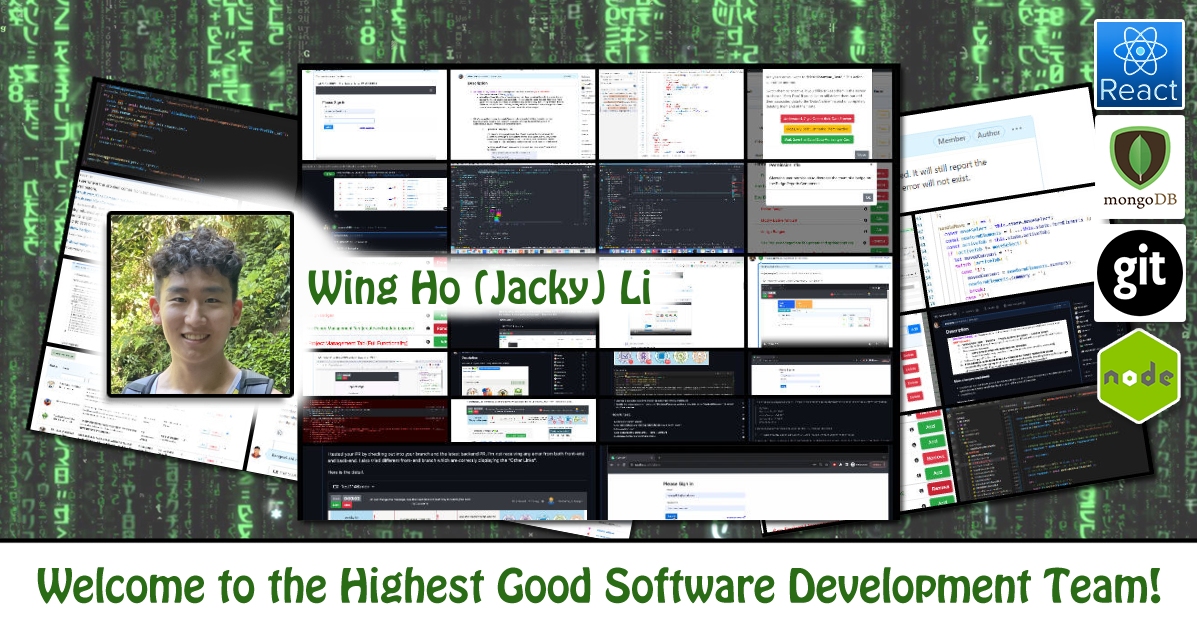
Wing Ho, a dedicated software developer, specializes in building projects with a focus on efficiency and performance, utilizing HTML, CSS, JavaScript, TypeScript, React.js, Node.js, and Next.js. His academic background includes a Bachelor’s Degree in Chemistry from the Hong Kong University of Science and Technology, where he honed critical thinking and problem-solving skills through experimental design and data analysis. Transitioning from a role as a chemical analyst, he pursued post baccalaureate studies in computer and information systems at Douglas College, acquiring a broad spectrum of knowledge encompassing web development and cloud computing. Currently, Wing Ho is poised to embark on his career in software development. As a member of One Community, he actively contributes to the development of the open-source Highest Good Network software, with a specific focus on system optimization and the creation of a user-friendly interface.
WELCOME TO THE TEAM WING HO!
FOLLOW ONE COMMUNITY’S PROGRESS (click icons for our pages)
 One Community
One Community